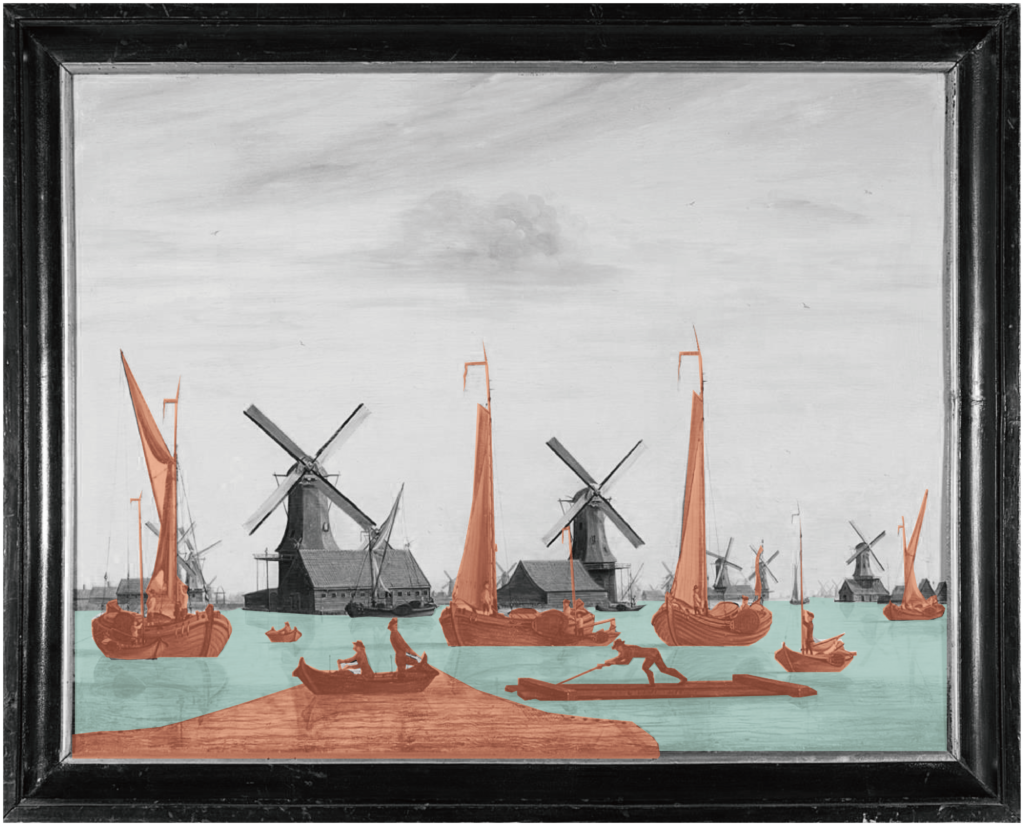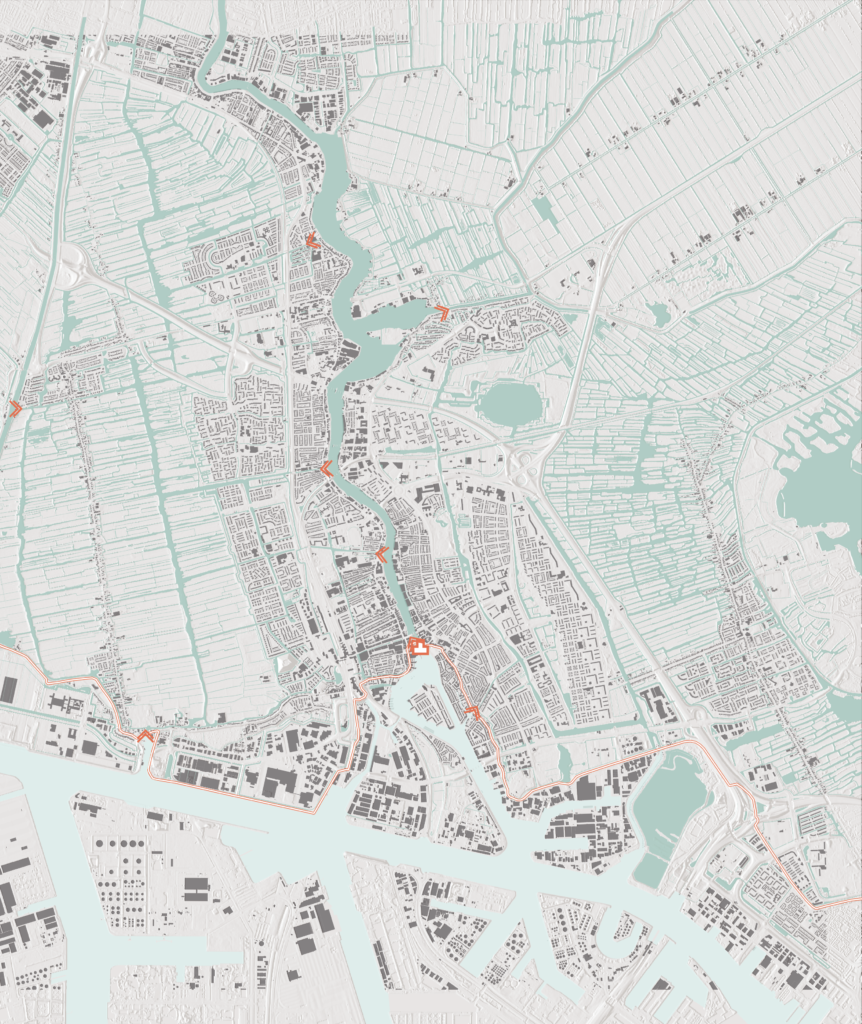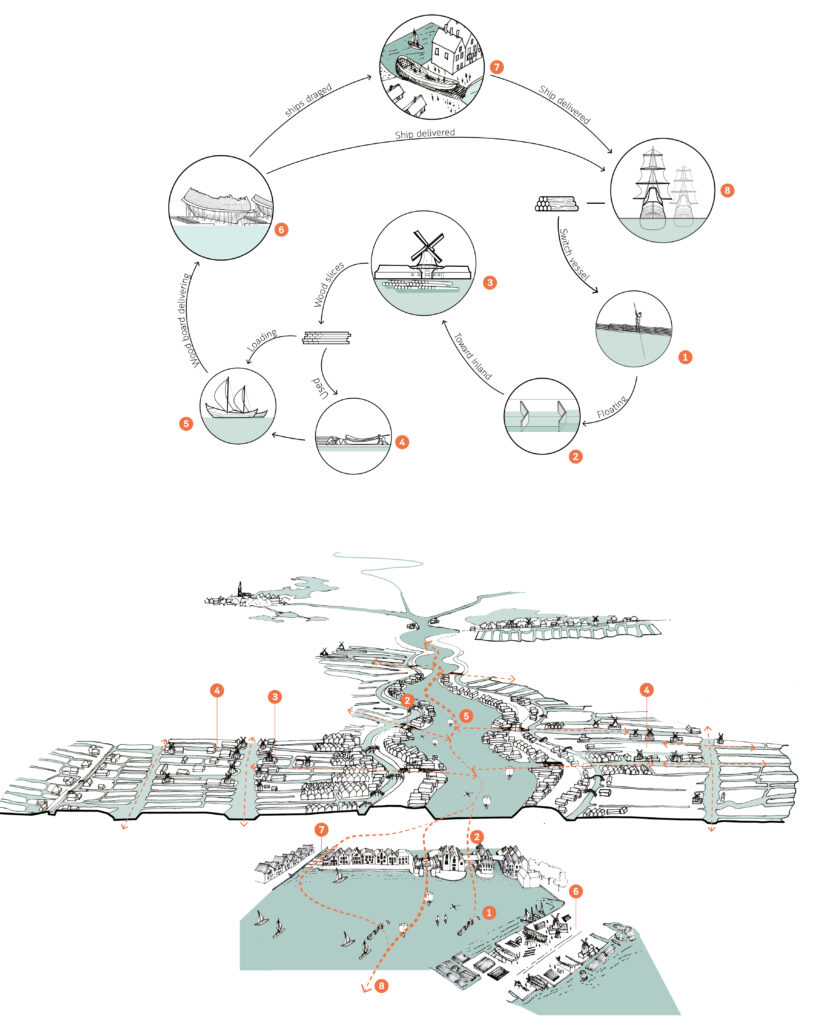
The industrial landscape and trading
Ken Chen
water network of Zaanstreek.
2023
The research area is Noord Holland province, specifically the Water Authority of Hollands Nooderkwartier. The old reclamation history creates the catchment area divided by the boezem systems. The west area is connected as a whole; the east part is independent of the Schermeer boezem due to the direct water discharge from polders into outer water. Zaanstreek is situated at the south end of the whole system and well connected to Amsterdam.

The transformation of the North Holland area is drastic. Due to the peat bog reclamation and excavation, the land has been drained for centuries which caused significant subsidence. The ribbon village, the Peat River town, and the polder water system formulate the basic character of the area. Furthermore, because of the subsidence and the re-wetting of the land, it was unsuitable for growing crops. Thus, the locals started to find another job for a living: fishing. After generations, they became merchants and businessmen. During this time, many cities emerged alongside the dikes.


Circular Stories
The emergence of the industrial landscape in the Zaanstreek area is a multi-causes history. The relationship between Amsterdam and Zaandam is special, they were competitors but also collaborators. The cheap cost of materials, transport and human power was the attracting forces for the merchants. According to the research, during the boom time, nearly 120 ships are built every year, and the price of each ship is about 28,500 gulden. It can be known that the cash flow involved in the shipbuilding industry is about 3.4 million Dutch guilders, that is, equal to 7,000 people’s salaries (about 1 guld per person earned) And related industries must benefit from the shipbuilding industry. After the shipbuilder made money, they turned to invest in the configuration of equipment and sites. The shipyard on Voorzaan’s homeland was the result of a joint investment by shipbuilders. Finally, the shipbuilding industry mainly situated in the Voorzaan.

